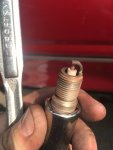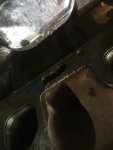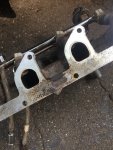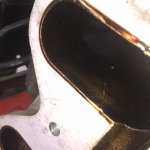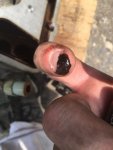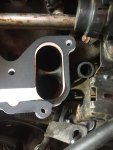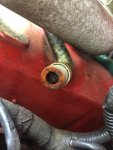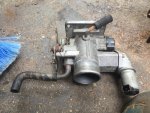STPL
Member
- Joined
- Apr 12, 2017
- Messages
- 94
- Reaction score
- 5
- Points
- 8
- Location
- CT
- Vehicle Year
- 1994
- Make / Model
- Ford
- Engine Size
- 2.3l 4cyl
- Transmission
- Manual
- My credo
- N/A
Hi all! Looking for some opinions on where to start here. This truck has always had a coolant temp issue, it barely registers 1/8 of the way up the gauge when hot. I read a few threads about the engine running on the colder side of the gauge so I didn't consider it an issue. Slowly, it seems the idle is starting to get worse and worse. I cleaned the IAC Valve and the truck starts up with more pep, but as it warms up the idle gets rough and the engine starts to vibrate. It never feels like its going to die, but something is clearly off. Recently its been feeling like its down on power as well.
When the engine is idling poorly, if I give it a little bit gas it smooths out and stops vibrating.
I cleaned the IAC which improved the cold idle, and if I unplug the IAC when running the idle gets worse. Plug it in and it gets better. Im going to take that as a sign the IAC is functioning normally. Sounds good?
If I unplug the MAF (Mass Air Flow Sensor) while the engine is running I get no change. Still the same rough idle. Does that mean the MAF is shot? I would assume that the idle would differ if I unplugged it.
I replaced the thermostat about a year ago just for basic maintenance before I got the truck on the road so I don't have any knowledge of how it ran with the old thermostat. I was running the old radiator with just water in the system for the better part of a year and finally got around to replacing the old rad and filing the system up with coolant. I had heat in the cab when i was running water, but now there is barely any with the new radiator and thermostat. Now the temp gauge barely gets off the bottom of the gauge and right above the bottom line above the "C". I notice there are a few different thermostats available for this ranger. Some are 160*, 180* and 195*. If I put a 15 degree lower thermostat in the truck will it throw off the temperature by gauge that much?
Fuel filter is less than two years old. I'm not ruling out the fuel rails being bad, is there a test for that?
Im thinking this could be a MAF issue or a coolant sensor issue thats throwing off the computers air/fuel mixture. Im not completely ruling out a misfire, but the coil packs all produce a spark when I remove the wire from the coil pack. It could still need a new IAC as well, cleaning it out might not have completely saved that one.
Of course I appreciate any and all advice! Let me know your thoughts and if you have any questions.
When the engine is idling poorly, if I give it a little bit gas it smooths out and stops vibrating.
I cleaned the IAC which improved the cold idle, and if I unplug the IAC when running the idle gets worse. Plug it in and it gets better. Im going to take that as a sign the IAC is functioning normally. Sounds good?
If I unplug the MAF (Mass Air Flow Sensor) while the engine is running I get no change. Still the same rough idle. Does that mean the MAF is shot? I would assume that the idle would differ if I unplugged it.
I replaced the thermostat about a year ago just for basic maintenance before I got the truck on the road so I don't have any knowledge of how it ran with the old thermostat. I was running the old radiator with just water in the system for the better part of a year and finally got around to replacing the old rad and filing the system up with coolant. I had heat in the cab when i was running water, but now there is barely any with the new radiator and thermostat. Now the temp gauge barely gets off the bottom of the gauge and right above the bottom line above the "C". I notice there are a few different thermostats available for this ranger. Some are 160*, 180* and 195*. If I put a 15 degree lower thermostat in the truck will it throw off the temperature by gauge that much?
Fuel filter is less than two years old. I'm not ruling out the fuel rails being bad, is there a test for that?
Im thinking this could be a MAF issue or a coolant sensor issue thats throwing off the computers air/fuel mixture. Im not completely ruling out a misfire, but the coil packs all produce a spark when I remove the wire from the coil pack. It could still need a new IAC as well, cleaning it out might not have completely saved that one.
Of course I appreciate any and all advice! Let me know your thoughts and if you have any questions.
Last edited:

